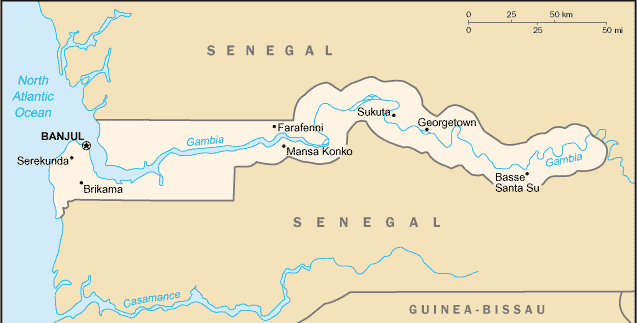Map:

Overview:
The Gambia gained its independence from the UK in 1965; it formed a short-lived federation of Senegambia with Senegal between 1982 and 1989. In 1991 the two nations signed a friendship and cooperation treaty. A military coup in 1994 overthrew the president and banned political activity, but a 1996 constitution and presidential elections, followed by parliamentary balloting in 1997, completed a nominal return to civilian rule. The country undertook another round of presidential and legislative elections in late 2001 and early 2002. Yahya A. J. J. JAMMEH, the leader of the coup, has been elected president in all subsequent elections.
The People:
Population: 1,593,256 (July 2005 est.)
Age structure:
0-14 years: 44.5% (male 356,079/female 352,894)
15-64 years: 52.8% (male 416,809/female 424,429)
65 years and over: 2.7% (male 22,111/female 20,934) (2005 est.)
Religions:
Muslim 90%, Christian 9%, indigenous beliefs 1%
Government Type:
republic under multiparty democratic rule
Leader(s) to pray for:
chief of state: President Yahya A. J. J. JAMMEH (since 18 October 1996; note - from 1994 to 1996 he was Chairman of the Junta); Vice President Isatou Njie SAIDY (since 20 March 1997); note - the president is both the chief of state and head of government
Source: The World Factbook
View All Countries